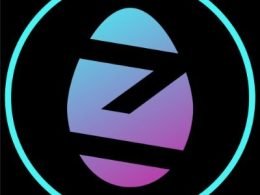Within the last couple of years, NFTs have become very popular. If you are entering the crypto space, you may be lost when hearing terms such as “NFT.” But don’t worry, this guide will break down what it is even if you are a complete newbie. We’ll look at what NFTs are all about, the different types, and what NFT 2.0 means.
What Is an NFT?
NFT stands for Non-Fungible Token. But what does that even mean?
Non-fungible means that something is unique and can never be replaced with anything else. For example, a dollar bill is fungible because one can replace it with another; they are the same. A piece of art, such as the Mona Lisa, is non-fungible because it is one of a kind.
A token is a digital certificate proving that you own something. Something, in this case, might be a piece of digital art, a collectible, or even a virtual item in some sort of game. In the case of NFTs, instead of owning a thing, you very well own the bit of code that represents that thing.
A Brief History of NFTs
NFTs did not fall from the sky. They started to take off in 2017 when the blockchain game CryptoKitties allowed users to buy, sell, and breed digital cats. Each was distinct and an NFT.
Then, the world woke up and realized that these NFTs could be more than digital collectibles. Artists, musicians, and even sports leagues started releasing their NFTs, and suddenly, a full market was heating up.
NFTs blew up in 2021 when digital pieces of art started selling for millions of dollars. Suddenly, everybody was jumping in, from celebrities and tech giants.
How NFTs Work
NFTs exist on a blockchain, which is essentially a digital ledger. Blockchains are public in that anyone can see the transactions taking place on them, yet they are also secure and tamper-proof.
A majority of the NFTs are kept on the Ethereum blockchain, though other blockchains, including Cardano and Solana, also support NFTs. Once you buy an NFT, the transaction gets recorded on the blockchain, and it assigns ownership of that digital asset to you.
What is NFT 2.0?
Given the fact that we have established what NFTs are, let’s discuss the concept of NFT 2.0.
NFT 2.0 simply refers to the coming generation of NFTs. Think more in terms of an upgrade. During the early days when NFTs had just begun, they were pretty stationary in that you pay money for some sort of digital art, and that was it. NFT 2.0 enables a host of interactive, moving, and grooving capabilities. So, here’s what differs with NFT 2.0:
- Programmable NFTs: The NFTs are able to change with the passage of time or an event. You could have an NFT of a flower that blooms on your birthday or changes color when the weather in your neighborhood changes.
- Fractional Ownership: With NFT 2.0, you will be able to own just a part of an NFT, kind of like owning company shares. Lots of people can invest in high-value NFTs without much money.
- Interoperability: NFT 2.0 makes it possible to use NFTs across different platforms or applications. That is to say, for example, if one has bought some special outfit with an NFT in a video game, they would be allowed to wear it while playing another game.
- Royalties: It is possible to set NFTs so that each time the work gets resold, instant money is made for content creators. Indeed, this was possible with earlier generations, too, but with NFT 2.0, it became smoother and more efficient.
Types of NFTs
Indeed, several varieties of NFTs have several uses. Some of the most common ones are listed below.
- Digital Art: This is one of the most popular forms of NFT. Artists create a single unique digital artwork that gets sold and is owned by collectors. Some pieces have fetched millions of dollars!
- Collectibles: These are things that people collect, including but not limited to, digital trading cards. Among the most famous examples, NBA Top Shot allows fans to purchase and sell official NBA highlights as NFTs.
- Music and Videos: Many musicians also create NFTs to sell exclusive songs, albums, or even tickets to concerts. Quite a few bands and solo artists release special edition music NFTs that cannot be found anywhere else.
- Virtual Real Estate: People are buying virtual land in other virtual worlds like Decentraland and The Sandbox which they can sell and build on. These virtual plots of land are NFTs.
- In-Game Items: Another fast-growing use for NFTs falls within buying unique in-game items in video games, like weapons, outfits, or characters. Those can sometimes be moved across different games.
Why NFTs Matter
NFTs introduce a new layer to owning and trading digital goods. Before NFTs came around, one could not prove that they owned a certain digital item. For instance, if one downloaded some pictures from the internet, how could he/she prove that it was their picture? With NFTs, you get verified proof of ownership.
This is huge for creators because they can sell directly to their fans without a middleman like a gallery or record label. NFTs can also include royalties, so the artist can continue making money from their work.
NFTs: The Future
NFT 2.0 is just the first look into what could be developed with these types of digital assets. As the technology continues to improve, we will most likely see uses for them become even further advanced. We may even have NFTs serve more regular purposes, like digital IDs and certifications right down to house deeds.
What first started as an idea of buying and selling digital art and collectibles has rather grown into something much more. NFT 2.0 has made the concept of what an NFT could do endlessly.
From art, gaming, and music to even virtual real estate, there’s probably some sort of NFT that you’re interested in. And with this technology rising every day, who knows what the next amazing forms it may take?










